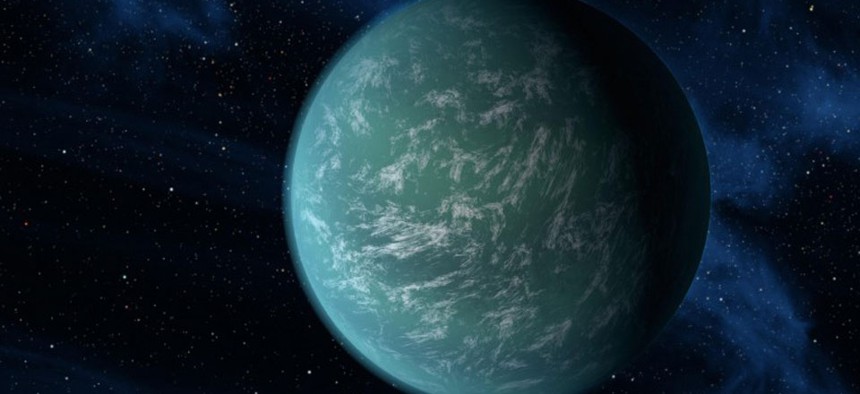Meet the New Planet That’s Way Out Past Pluto

NASA
NASA just redefined the edge of our solar system.
The solar system has a new kid on the (far end of the) block.
Thanks to a NASA discovery, we now know of our most-distant fellow sun-orbiter. "This discovery adds the most distant address thus far to our solar system's dynamic neighborhood map," NASA's Kelly Fast said in a release.
The space agency says its discovery could be a dwarf planet, the same designation given to Pluto when it lost its regular planet status. For now, it's calling the object 2012 VP113.
In lieu of a catchy name, NASA provided some fun facts about its discovery. At its closest, 2012 VP113 is about 80 astronomical units (the distance between Earth and the sun) from the sun. By contrast, Pluto gets within 30 AU.
The next-closest object we know about is Sedna, which comes within 76 AU and veers as far away as 937 AU. Sedna's orbit takes some 11,400 years to complete. Scientists believe as many as 900 objects with similar orbits await our discovery.
Sedna and 2012 VP113 were discovered as they neared the sun; both are not visible in the more distant parts of their orbits. In other words, if we'd missed them, we would not have been able to see them for thousands more years.
The discovery of 2012 VP113 may lead to an even greater revelation—the trajectory of its orbit suggests to NASA that a distant, undiscovered planet may be out there that is 10 times the size of Earth. "Further studies of this deep space arena will continue," NASA promises.





